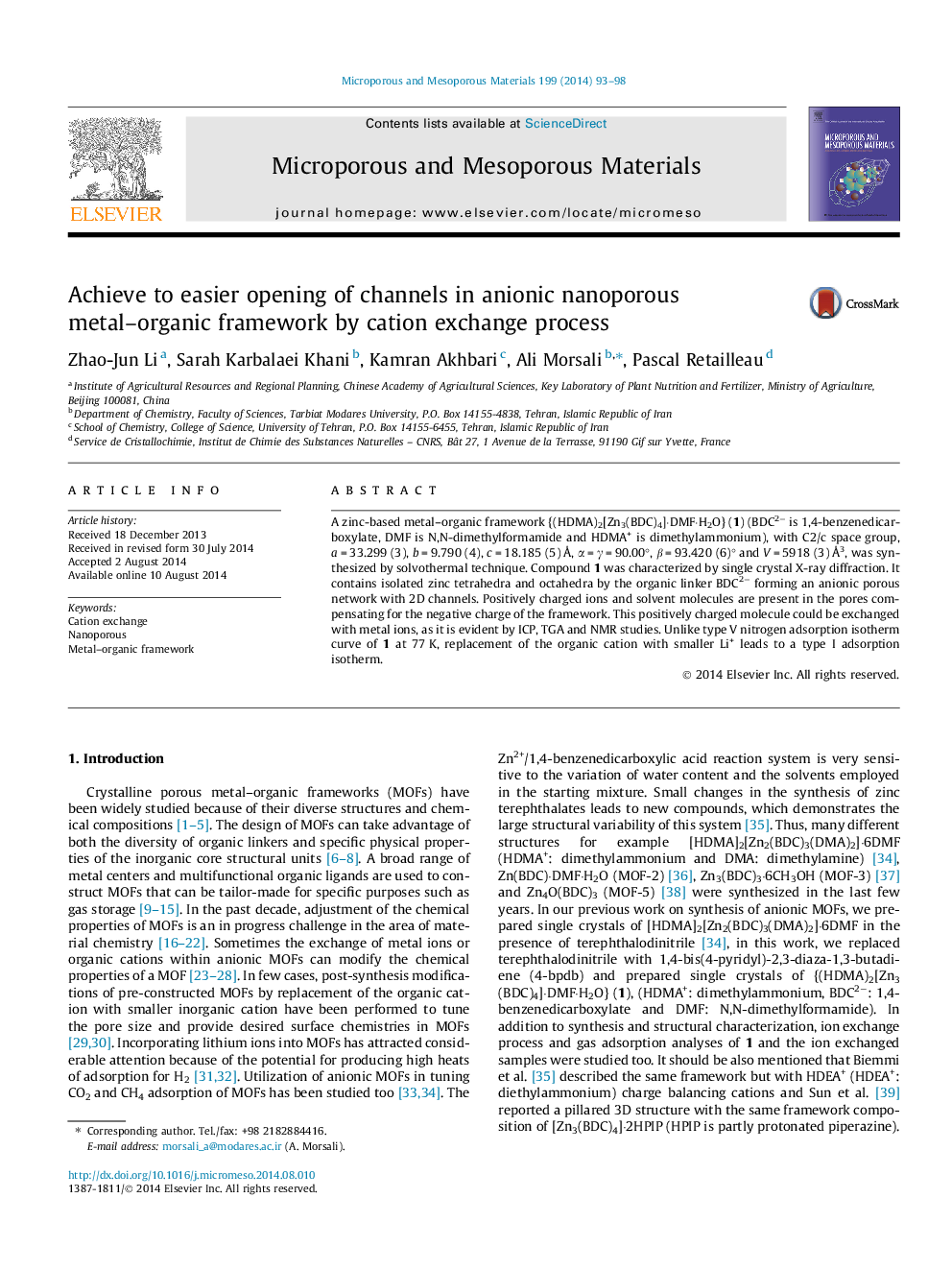| کد مقاله | کد نشریه | سال انتشار | مقاله انگلیسی | نسخه تمام متن |
|---|---|---|---|---|
| 72976 | 49039 | 2014 | 6 صفحه PDF | دانلود رایگان |
• Post-syntheses cation exchange of an anionic MOF with three ions was studied.
• Unlike type I, the initial MOF shows typical type V adsorption curve.
• Lithium exchanged sample of anionic MOF shows type I adsorption isotherm.
A zinc-based metal–organic framework {(HDMA)2[Zn3(BDC)4]·DMF·H2O} (1) (BDC2− is 1,4-benzenedicarboxylate, DMF is N,N-dimethylformamide and HDMA+ is dimethylammonium), with C2/c space group, a = 33.299 (3), b = 9.790 (4), c = 18.185 (5) Å, α = γ = 90.00°, β = 93.420 (6)° and V = 5918 (3) Å3, was synthesized by solvothermal technique. Compound 1 was characterized by single crystal X-ray diffraction. It contains isolated zinc tetrahedra and octahedra by the organic linker BDC2− forming an anionic porous network with 2D channels. Positively charged ions and solvent molecules are present in the pores compensating for the negative charge of the framework. This positively charged molecule could be exchanged with metal ions, as it is evident by ICP, TGA and NMR studies. Unlike type V nitrogen adsorption isotherm curve of 1 at 77 K, replacement of the organic cation with smaller Li+ leads to a type I adsorption isotherm.
A zinc-based metal organic framework was synthesized by solvothermal technique and characterized by single crystal X-ray diffraction. Positively charged ions and solvent molecules are present in the pores compensating for the negative charge of the anionic framework. This positively charged molecule could be exchanged with metal ions. Nitrogen adsorption isotherm of 1 at 77 K shows type V adsorption curve, while the replacement of the organic cation with smaller Li+ leads to a change in adsorption isotherm type from V to I.Figure optionsDownload as PowerPoint slide
Journal: Microporous and Mesoporous Materials - Volume 199, 15 November 2014, Pages 93–98
